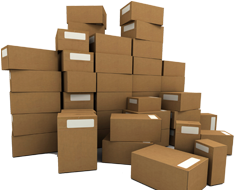A Model Example of Warehouse Safety |
|
Safety is important in any industry. Whether you are working in a kitchen or fighting a forest fire, the safety of employees is critical. Although, our government stresses the need for a safe work environment through legislation like OSHA (Occupational Safety and Health Administration), jobs that require a heightened level of danger or personal harm should make safety a priority just as much as customer satisfaction.
Working for a third-party logistics provider may not seem like a hazardous job at first glance. OSHA reports that the risk of fatal injuries to warehouse workers is higher than the national average for all other industries. Any smart 3PL manager will tell you that safety is a big task item for keeping production moving forward and fulfilling customer’s needs.
Making Warehouse Safety a Priority
When you maintain a safe 3PL facility and employees practice caution you get more back than just a safe workforce. Safety means fewer accidents, optimal productivity and avoids costly workers compensation payouts. In the end, safety equals better services to your customers.
Education and Training – Accidents are going to happen, but they do not have to be difficult to prevent. The first place to start is updated documentation and safety training. A third party logistics provider is doing themselves, their employees and their customers a disservice if they cut corners on their safety training and guidance. Training needs to be on a rotating basis so new employees and current employees are always kept up-to-speed on best safety practices. Depending on the size of a 3PL they may approach training and employee education differently. One company may begin by forming a safety committee, while another would host regularly scheduled safety meetings.
Proper Procedures – Product and inventory handling are also areas that require a manager’s focus. Even if your facility does not store any hazardous materials, customers trust you with their inventory and it must be handled properly. Warehouse storage, docking, packaging and forklift operation all need to follow strict guidelines to guarantee employee safety and inventory integrity.
Facility Maintenance – Much of this revolves around 3PL providers’ facilities, not only the areas where inventory is stored, but the mechanisms that maintain those areas. Any accident that occurs due to a building code violation or improper use of equipment is unacceptable. Electrical safety and building integrity should be monitored on a regular basis. Anything that may present itself as a hazard should be addressed by a skilled professional. This includes the walls, the floors, storage areas, and proper ventilation – the entire work environment.
Safety lowers the 3PL overhead and creates additional savings that can be passed over to the customer. These are three broad areas a customer would want to review first when considering a 3PL company. A more specific overview of warehouse safety can be found on the OSHA website.
Better warehouse safety is a sign of a truly invested 3PL provider. Keeping a safe work environment leads to empowered employees. A satisfied employee is more likely to follow safety protocols and will continue to work just as hard. The obvious goal is to make sure accidents do not occur, employees are safe and customer inventories avoid needless damage.
In the long term, keeping a safe warehouse means better overall 3PL services and bigger productivity. Customers can be assured that their inventories will be well-maintained and managers spend less time recovering from accidents and more time improving internal structures.
Sources:
http://www.inboundlogistics.com/cms/article/choosing-a-3pl-safety-first/
http://www.inboundlogistics.com/cms/article/warehouse-safety-its-no-acci...
http://logistics.about.com/od/qualityinthesupplychain/a/warehouse_safe.htm
http://www.osha.gov/Publications/warehousing.html



